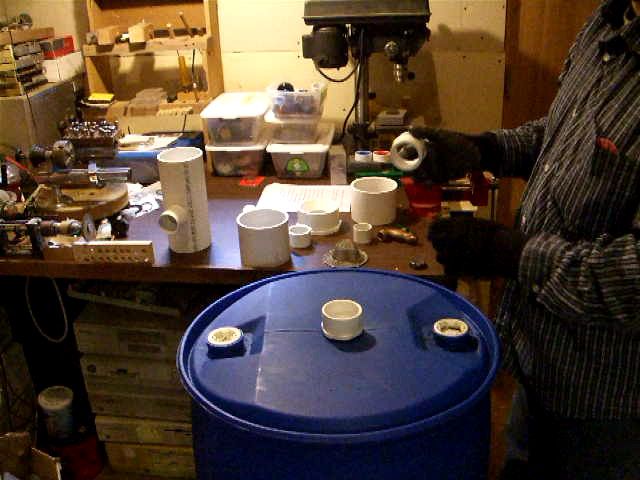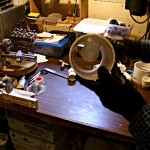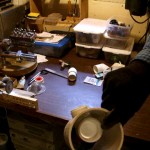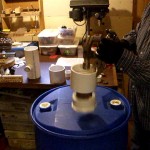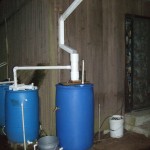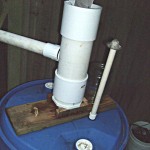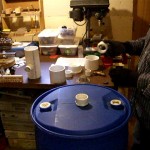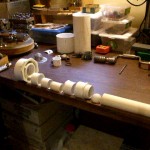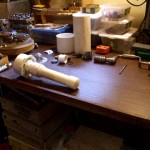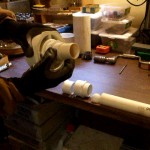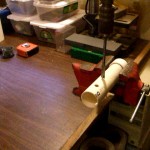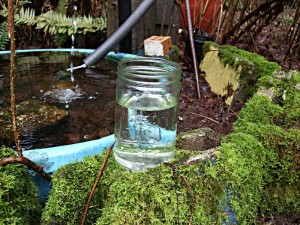Thirty eight years ago we had a narrow deep hole dug in the ground to get at the water down there. When we hooked up the pump, and the water ran clear we drank from the well – we trusted the well driller, the water testing facility at the county, and the fact that other people in the area also had wells and were drinking the water and did not get sick. Thirty eight years later we are not sick, but because of technology we have discovered that there is too much iron in the water for older people ( mostly from the iron casing used in the well pipe), and that there is bacteria in the ground (naturally occurring) that will consume ( and is consuming in our case) iron, and they produce hydrogen sulfide in the process; and that there are trace elements in all water including the water in our well, plus the lead used in the seal on the sand screen has been supplying us with minute amounts of lead all these years. Experience, collaboration, belief, trust, science and technology all combined. Soon we will be hooking up a slow sand filter to our main well to take out the lead, the bacteria, and the trace amounts of iron. I know ( believe, trust) it will work because of science, experience, and observation. The knowledge of the operation and the belief that it will work is based on experience, science, technology, and observations not just faith, or belief or any kind of “warm fuzzy” feelings.
Science can be described as observations of designed experiments carried out and shown to be repeatable with the same results each time. We observe with our five senses aided by devices that can show us stuff we cannot detect with our 5 senses. This is, essentially, science. It is collaborative. Good research is peer reviewed or at least documented to have been repeated by others many times. Science has told us that bacteria, chemicals, and viruses in water can make us sick, very quickly, or over many years. Technology has allowed people to figure out ways to remove lots of the nasty stuff from water; unfortunately, in the process more poisons have been added in the process of cleaning water. Science has told us that biological sand water filters work. It has also told us that sand in a container about 1 metre deep with water slowly flowing through makes water very safe. There is, however, a huge problem with science, and it has been getting worse and worse. That is motive for profit. There are thousands of situations where scientific research is used for profit – and then it becomes very tempting to arrange the results of experiments to make it easy to sell stuff. Be very careful of water filters for sale. Also be very careful of slow sand water filters. Have your water tested. If you are depending on some other kind of filter to remove biological, and chemical toxins from your water, have the water tested and know precisely how your filter works, don’t just believe it works. Slow sand filters do NOT need replacement cartridges, ever. They are as sustainable as any natural process on earth. This has been confirmed beyond a reasonable doubt by over 100 years of experience and research using the tools of science. The same science that tells us that super- expensive complex, non-sustainable water filters provide safe water, tells us that biological sand water filters also supply safe water. But don’t take my word for it – build one, have it tested and you will see.
From your high school days; remember Philosophy 101? How do we ‘know” anything? Are we all born with all of the knowledge we need already in our minds? How each person answers these questions will probably be different, based on their “beliefs”. It is important to note that beliefs show nothing beyond a reasonable doubt – they are a state of mind based on faith and trust. Also note that science does not “prove” anything nor do observations, they merely show likelihood of a certain physical occurrence beyond reasonable doubt. For example I see water falling over a cliff, and I believe that it actually is falling because I have seen the evidence that shows beyond a reasonable doubt that water falls over a cliff. I trust that my observation is correct. This experience supplies some knowledge based on observation. Knowledge involves thinking and observing, and we trust that what we observe in our physical world is real and is actually what it appears to be. Technology allows us to “observe” things we cannot see with our unaided eyes and we trust that stuff under the microscope is real. Now, how do we “know” the water we drink is safe? We note that others are drinking the water that has been made safe by technology and they are not getting sick (observation), and we trust what we are told about the equipment supplying the water (belief). So part of this is belief, or more accurately; trust, and part is technology actually working. Now, what about this “science” and “technology” that help us maintain clean water? Do we only accept the part we understand based on our life experience or “education”, or only the part that does not challenge our religious “beliefs”? The line between “belief” and “observation” often gets nearly invisible. If we do not trust the source of information, we will probably not “believe” anything regarding the observations made.



